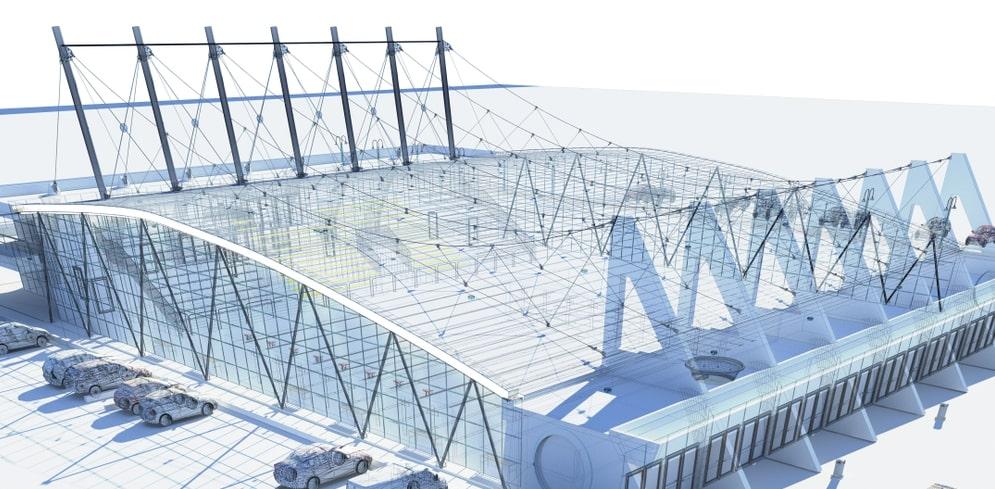Building Information Modeling (BIM) is a highly intelligent 3D model-based process that allows AEC (Architecture, Engineering, Construction) professionals to collaborate on planning, design, and construction of a building project. When BIM is used in building projects, the level of detail can range from a broad geometric representation to an accurate as-built model of the building.
A BIM model is made up of BIM objects that are intelligent, have dimensions, and store data. The BIM software updates the model if any element is changes. The Level of Development (LOD) framework is used to specify the status of a BIM element, which helps AEC professionals, MEP engineers, contractors and project managers with coordination and communication. In some cases, the term “Level of Detail” is also used, which can be quite misleading. For example, a model with high level of visual details but no technical specifications is still considered to be preliminary. Thus, Level of Development (LOD) is preferred since it refers to both visual and non-visual information.
Now that we know what BIM is, lets take a look at the different level of development involved in BIM.
6 Levels of Development in BIM
The American Institute of Architects (AIA) has defined 6 level of development, and each level represents a different stage of design in the construction process. As mentioned above, the LOD refers to specific building systems and component, not the complete project. LOD helps in indicating which areas of the design have reached the construction documentation stage.
The definition of a “completed model” varies depending upon who sees it and for what purposes. For instance, Construction Documentation (LOD 350) is considered as “completed” by contractors, and on the other hand, clients consider As-Built model (LOD 500) as a completed building. As the LOD goes higher, the level of details and data contained in the BIM elements increases.
Let’s dive into the features of building components at individual LOD stage:
- LOD 100: Pre-Design
A LOD 100 element does not contain any features like dimensions, shapes and exact placement locations. In other words, these elements are represented with generic placeholders that lack physical information. The general information about LOD 100 elements may be available from other components, however, they are considered as an approximation at this stage.
- LOD 200: Schematic Design
LOD 200 elements contain approximate features like dimensions, shapes, locations, etc. and are slightly more complex than LOD 100 elements. Non-geometric information may also be associated with some LOD 200 elements. While most LOD 200 elements have generic shapes representing volume occupied, some of these elements have recognizable shapes too. At this stage, all the information is still considered as approximate.
- LOD 300: Design Development
The graphical representations of LOD 300 elements are similar to LOD 200, but their geometry and physical features are considered accurate at this stage. In other words, the information obtained by the LOD 300 models can be used at construction stage.
- LOD 350: Construction Documentation
LOD 350 elements have the same information as that of LOD 300, but they also include interfaces with other building components like connections and support. A LOD 350 model indicates how the component will be installed, and also how it interacts with other building systems.
- LOD 400: Construction
At this stage, LOD 400 elements include details like fabrication, assembly, and installation. These details and information can be used by the suppliers to manufacture the components being represented. Non-visual information can also be attached to these model elements.
- LOD 500: As-Built
LOD 500 elements are field verified in terms of size, shape, quantity, location and orientation, and are considered to be accurate representations of the building elements after construction. Facility managers can use these elements as reference for operation and maintenance.
Now that we know about all the 6 LOD involved in BIM, the next step is to know how to use them.
How LOD Framework can be Used Effectively
It is important to remember that Level of Development is a communication tool that is used to specify the modeling complexity of building elements. It is not necessary to develop the entire model up to LOD 500 for every project. For instance, commercially available standard materials and components do not require fabrication details (LOD 400). In some projects, some of the building aesthetic details are determined after construction, which may be left at a preliminary stage (LOD 100 or LOD 200). It is recommended to consult to a professional team with expertise in BIM for determining the building design requirements. Developers and contractors can save time and avoid the unnecessary work by identifying the required LOD for building systems.












No Comments